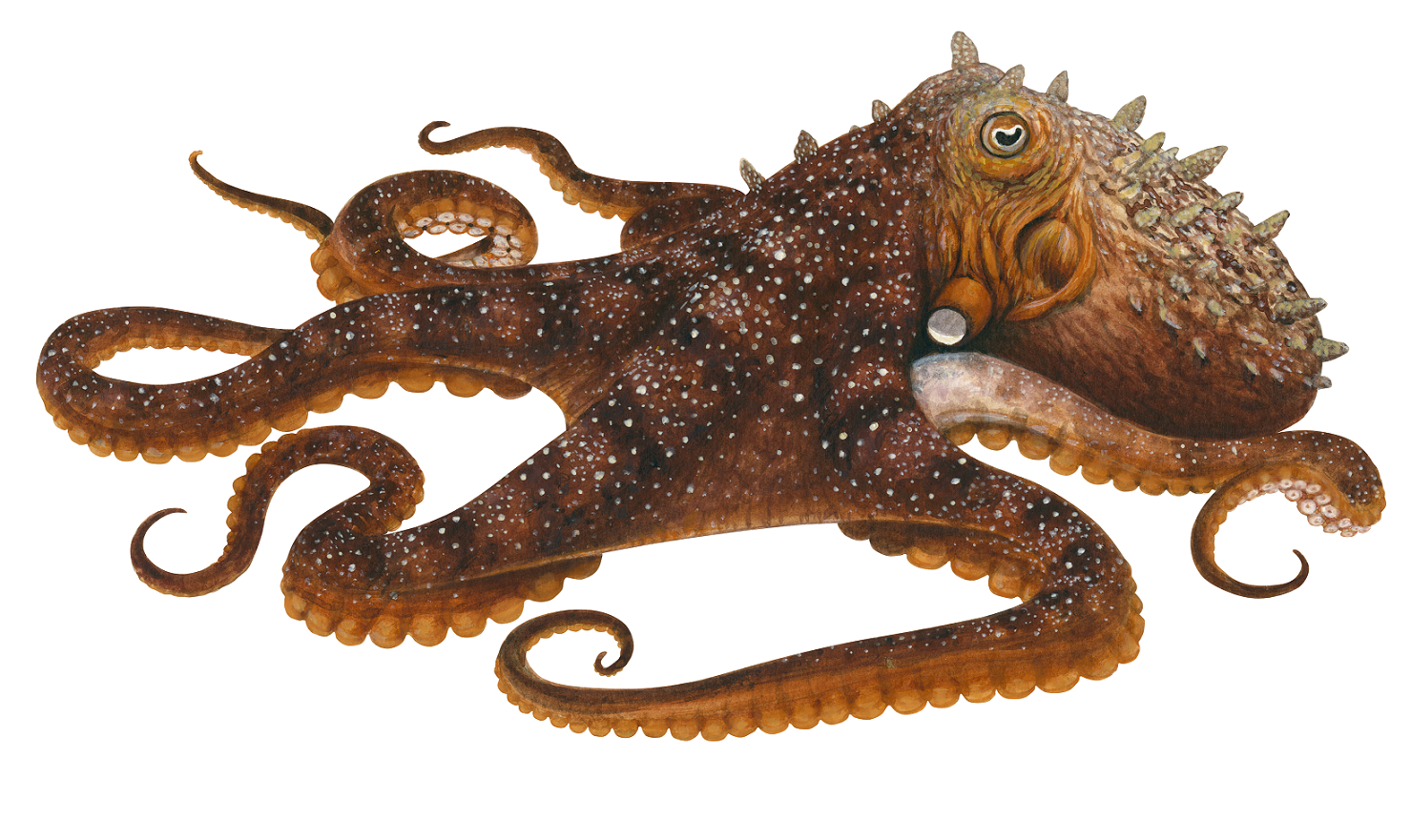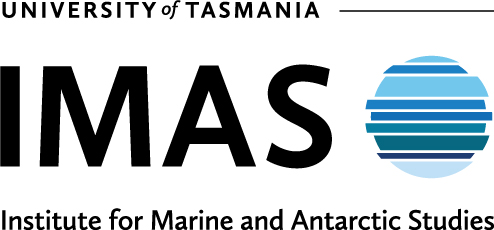Background
History of octopus harvesting in Tasmania
Development of commercial Māori Octopus harvesting
Pre-colonial harvesting of seafood by Tasmanian Aboriginal communities mainly involved hand collection. However, historical reports of octopus catch from the pre-colonial or colonial period do not appear to be available, even if it is likely that catches occurred Frijlink and Lyle (2013)
The commercial rock lobster fishery in Tasmania has had long-term interaction with Māori Octopus populations. In the late 19th century, there was a large expansion of rock lobster fishing from vessels using rings and pots, which led to depletion and concern about the sustainability of rock lobster harvests. There was controversy around the use of lobster pots relative to rings because of their greater effectiveness in depleting rock lobster on reefs, and the problem that lobsters in the pots were vulnerable to depredation by Māori Octopus. Pots were first legalised in the north of the state in 1903 and then in the rest of the state in the 1920s. Octopus were caught as bycatch throughout this period but were generally not retained until consumption patterns changed with greater immigration from Mediterranean Europe after the second world war.
Commercial landings of octopus from the lobster fishery are currently constrained by management imposing a landing limit of 100 kg per trip. Annual recorded landings for the fleet generally fluctuate between 5 and 10 t. As a consequence of the trip limit, the fishing mortality of Māori Octopus will exceed the landed catch because commercial lobster fishers generally kill octopus rather than release them to reduce lobster depredation.
A targeted octopus fishery has operated in Eaglehawk Bay since the 1970s. Most catch came from one operator who used a barrier net that trapped the octopus as they moved along the southern side of the bay, although hand collection also occurred. When the use of barrier nets was banned under this fishing permit in late 2009, the fishery declined substantially. In fisher reports to IMAS, declines in catch were also attributed to observed increases in seal abundance in the bay and significant assumed depredation of octopus.

Illustration©R.Swainston/anima.fish
Development of commercial Pale Octopus harvesting
Targeted fishing for Pale Octopus has occurred since 1980 and operated under permit for many years. The targeted Pale Octopus fishery represents the focus of this report and is referred to officially by NRE Tas as the Tasmanian Octopus Fishery (TOF). Since 1996, under the Offshore Constitutional Settlement (OCS) with the Commonwealth of Australia, Tasmania has assumed management control of the TOF within state waters (up to 200 nm offshore and south of 39°12’S). Since December 2009, a specific octopus licence (fishing licence (octopus)) was required to participate in this fishery, which operates within Bass Strait, including waters to the east of Flinders Island. Two licences were issued, both to the same operator.
The TOF primarily targets Pale Octopus using unbaited moulded plastic pots (‘shelter pots’; volume 3,000 mL) with no doors, which are attached to a demersal longline that is 3–4 km long and set on the sea floor at variable depths of 15–85 m (Leporati et al. 2009). Currently, a maximum of 1,000 pots per line is allowed. Octopus are attracted to these pots as refuges; pots are generally hauled after 3–6 weeks soak time. An abundant food supply may support a large population of octopus. When combined with a shortage of suitable shelters, this results in high catch rates. TOF geographic regions within the Bass Strait, as discussed in stock assessments can be seen here.
From 2000/01 to 2005/06 catches of Pale Octopus in the TOF increased substantially and, until the 2020/21 season, fluctuated around 80 tonnes, ranging from 55 t to 132 t. The 2020/21 season saw a significant increase in Pale Octopus catch, with a total of 154 t, representing the highest catch value in the history of the TOF.
While no further octopus licences can be issued for the Bass Strait area, the remaining state waters are classified as developmental and could be opened to licensed commercial fishing provided necessary research is undertaken. Four permits were issued in 2021/22 for octopus traps targeting Pale Octopus in Tasmanian state waters outside the area encompassed by the TOF. Specific areas of permitted use vary among permits, but generally encompass waters south of 41° South. The Pale Octopus stock accessed under these permits is identified in this report as the Tasmanian Shelf stock. One permit is restricted to the use of 700 unbaited shelter pots and an undefined number of unbaited trigger traps (state waters south of approximately Eddystone Point on the east coast and the Pieman River on the west coast; no octopus landings were recorded in 2021/22 under this permit). A second permit is restricted to the use of 500 unbaited shelter pots and 50 unbaited trigger traps (eastern waters between approximately St Helens Point and the south end of Maria Island). A third permit is restricted to the use of 1,330 unbaited shelter pots (traditional), 1,330 unbaited tetragon shelter pots, and 266 unbaited trigger traps (eastern and southern waters between approximately Cape Peron, Maria Island and South West Cape). A fourth permit is restricted to the use of 4,000 unbaited shelter pots (eastern and southern waters between approximately Eddystone Point and Whale Head).

Illustration©R.Swainston/anima.fish
Commercial Gloomy Octopus harvesting
Gloomy Octopus are believed to be uncommon in Tasmania and recorded mainly around the northeast, which is assumed to represent the southern end of their geographic distribution. The most recent and first species level records of octopus catches from the Rock Lobster fishery indicate that Gloomy Octopus might be distributed much more widely, however these species identifications are likely to be inaccurate. Gloomy Octopus are found on both reef and sediment habitat so may be taken by commercial operators in both the Rock Lobster fishery and the TOF. Based on observer observations, catch of Gloomy Octopus taken by the Rock Lobster fishery appears to be negligible. Gloomy Octopus has only been reported from the TOF since 2010/11.
Catches of Gloomy Octopus peaked at 18.6 t in 2017/18, which was unprecedented and thus interpreted as evidence of range expansion (Ramos et al. 2014, Ramos et al. 2015). However, annual trends in catch of Gloomy Octopus can more likely be explained by targeted effort in eastern Bass Strait. When TOF effort shifted westward after the 2017/18 season, catches of Gloomy Octopus were reduced back to previously low levels. In the 2021/22 season, during which effort was concentrated almost exclusively in western Bass Strait, only 815 kg of Gloomy Octopus catch was reported from the TOF. Similarly low catches had been observed already in the three preceding seasons. In 2021/22, octopus landings from the Rock Lobster fishery were identified for the first time to species level, with 1.6 t of Gloomy Octopus recorded.

Illustration©R.Swainston/anima.fish



